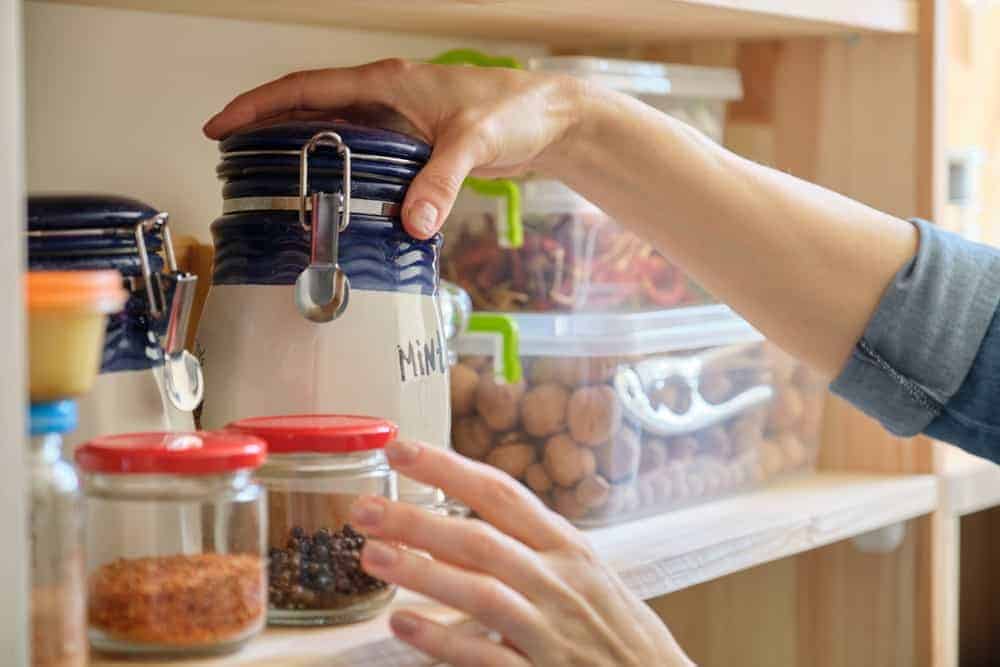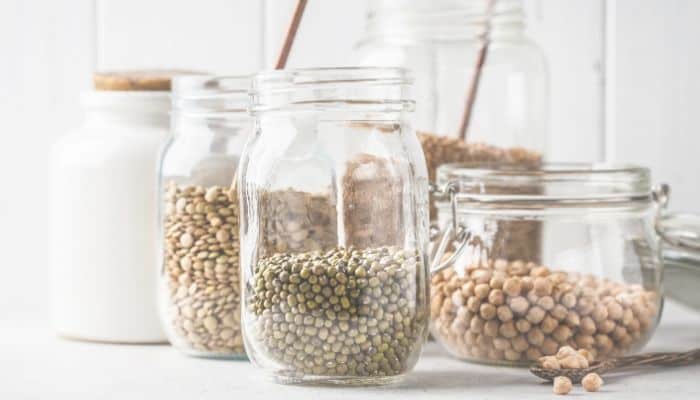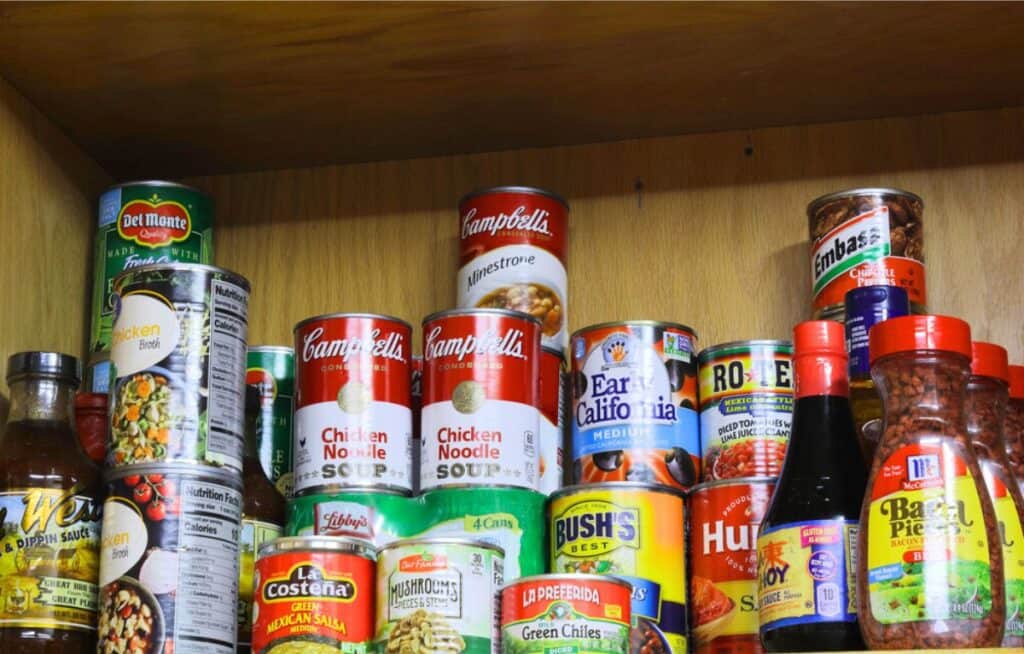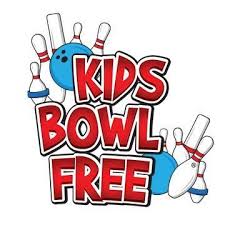What if you never had to pay full price for your pantry staples again?
Imagine opening your cabinets and knowing you have everything you need—without making a last-minute, overpriced grocery run.
That’s the power of a well-stocked pantry, and today, I’m going to show you exactly how to build one.

I’m going to share How to Build a Pantry Stockpile (Without hoarding or blowing your budget!).
Ever wished you could cut your grocery bill in half? Or avoid those last-minute trips to the store when you run out of something important? That’s exactly why I started stockpiling.
Having a small stockpile of essentials means you’re never paying full price for the things you use all the time.
You can wait for a sale, buy when the price is right, and skip the stress of running out.
And no, this isn’t about hoarding. Stockpiling is smart, strategic, and totally doable—even if you don’t have a lot of space.

Today, I’m going to walk you through how to build a stockpile that works for your family, plus give you a free printable checklist to make it even easier.
Why Stockpiling Saves You Money
One of the best money-saving habits I ever picked up was buying extras when things are cheap.
Instead of buying toothpaste, pasta, or toilet paper when I run out (and paying whatever the store is charging that week), I grab a couple of extras when they’re on sale.
That means I always have what I need and never have to pay full price.
Over time, this adds up to some serious savings.
Stockpiling is also great for:
Avoiding last-minute grocery runs (where you end up buying things you didn’t plan for) Having a backup plan when life gets busy or unexpected expenses pop up Keeping your pantry stocked with food you actually like, instead of grabbing whatever is available in a pinch
What Should You Stockpile?
The best stockpiles are built on things you already use.
There’s no point in stocking up on food your family won’t eat or products you’ll never use.
Here are some of the basics I always keep on hand:
Pantry Staples
Rice Pasta Flour Sugar Baking supplies (yeast, baking soda, etc.) Canned goods (beans, soups, vegetables, fruit) Peanut butter Shelf-stable milkHousehold Essentials
Toilet paper Paper towels Dish soap Laundry detergent Trash bagsHealth & Beauty
Toothpaste Shampoo & conditioner Deodorant Feminine hygiene productsPet & Baby Supplies (if you have them)
Cat or dog food Diapers & wipesThis is just a starting point. Your list will depend on what your family actually uses, so don’t feel like you need to stockpile everything at once.
Want a ready-to-go list? Grab my free printable stockpile checklist and make it even easier to track what you need!

How Much is Enough?
A good stockpile isn’t about filling every available inch of your house with stuff.
It’s about having enough to last until the next sale—without creating waste.
A simple rule of thumb: Buy only what you can use in a reasonable amount of time.
If you don’t eat canned peas, don’t stock up on canned peas just because they’re cheap. If you have limited space, focus on the essentials you go through regularly. If you end up with more than you need, consider donating to a local food bank, shelter, or church.Stockpiling should feel helpful, not overwhelming.
Where Do You Store It?
If you have a big pantry, great!
But if you’re working with a smaller space (like I was for years), you might have to get creative. Here are a few storage ideas:
Linen closet: Perfect for extra shampoo, toothpaste, and soap. Under the bed: Great for paper goods or bulk items. Garage or basement: If temperature and humidity allow, this can be a good spot for canned goods and household supplies. Kitchen cabinets: Dedicate one or two shelves just for stockpile items.When I lived in a small house with no basement, I had just a few shelves for extra food and a small spot in the linen closet for toiletries.
Even with that limited space, I saved a ton of money by stockpiling the right way.

How to Start Stockpiling (Without Overspending)
You don’t need to go out and buy everything at once.
In fact, I recommend starting small so you don’t wreck your budget.
Make a list of what your family actually uses—this will keep you from buying things just because they’re cheap. Watch for sales and deals. Stores have regular sales cycles, so wait for the best prices before stocking up. Use coupons when it makes sense. But don’t feel pressured—stockpiling works even without them. Buy in small amounts at first. Pick up an extra item or two each week instead of trying to build your stockpile overnight. Rotate your stock. Keep newer items in the back and older ones in the front so nothing goes bad before you use it.Once you get into the habit, you’ll find that stockpiling happens naturally.
You’ll reach a point where you don’t have to shop as often because you already have what you need.
The First Step
Stockpiling isn’t complicated, and you don’t need a ton of space or money to do it.
Just start small, focus on things your family actually uses, and build up your stockpile little by little.
If you’re ready to get started, grab my free Stockpile Checklist to keep track of what you need.
Just enter your email, and I’ll send it straight to your inbox!
What’s the first thing you’re adding to your stockpile? Let me know in the comments—I’d love to hear!














 Bengali (Bangladesh) ·
Bengali (Bangladesh) ·  English (United States) ·
English (United States) ·